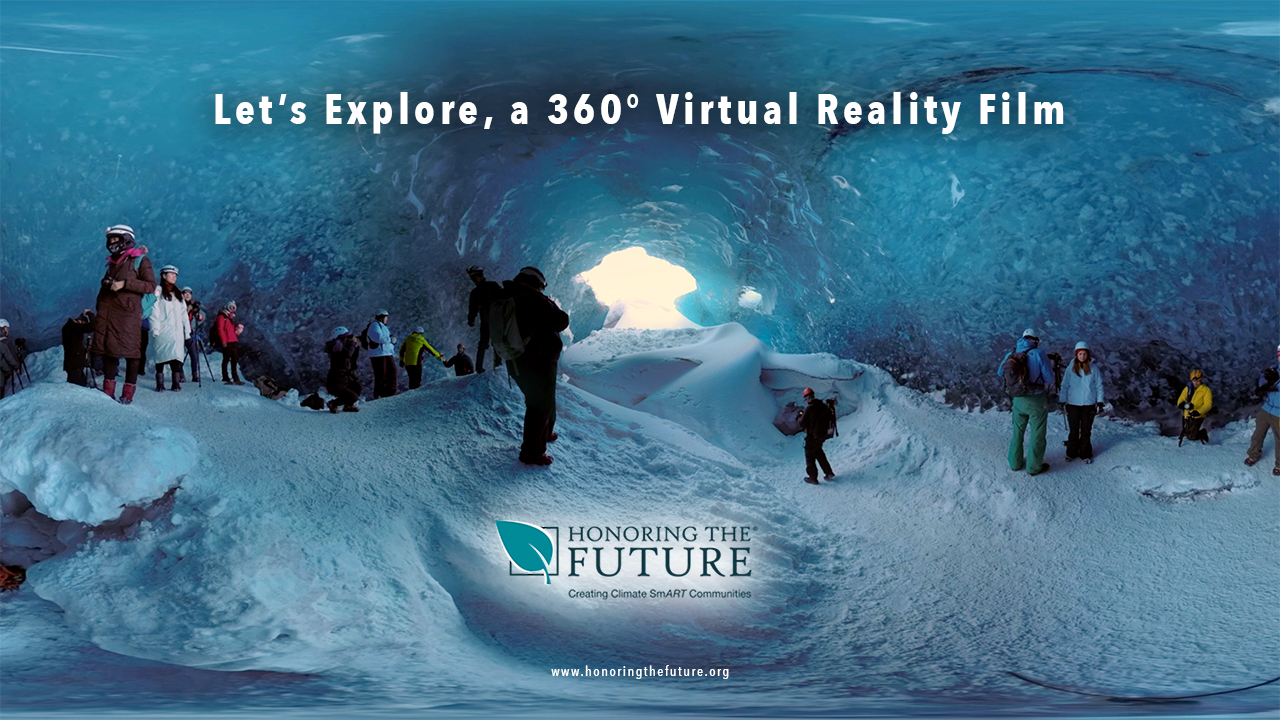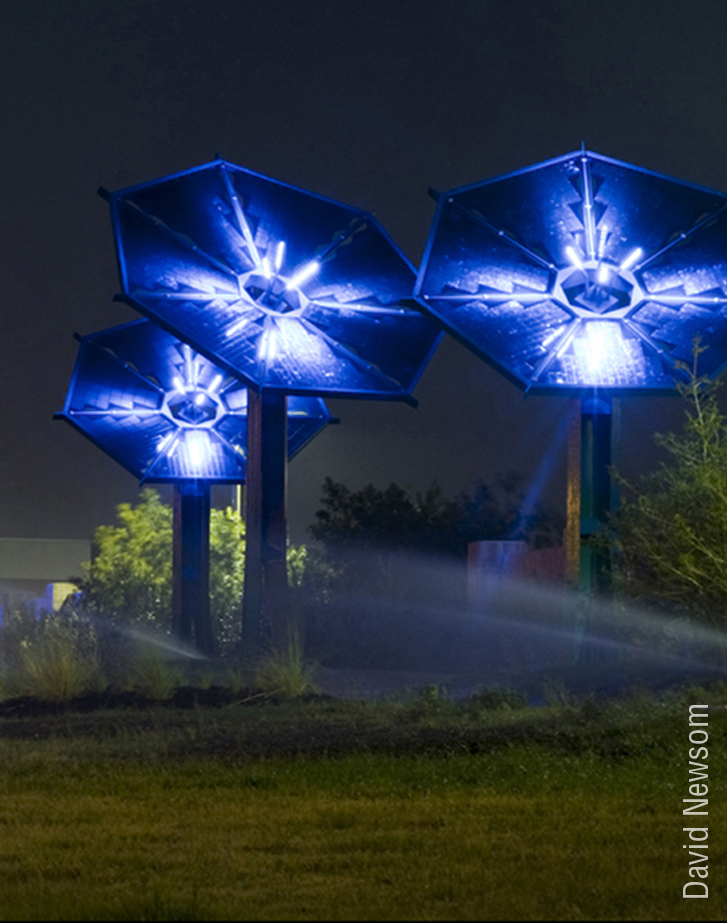Honoring the Future released a 360° virtual reality film about climate change, available for free online. The film, Let’s Explore, enables viewers to accompany scientists — virtually — to the far corners of the globe to see how scientists gather evidence that our climate is changing. Footage takes viewers to some of the world’s most beautiful locations – underneath glaciers, atop coral reefs, and beneath California’s towering redwood trees – to explore climate change impacts and solutions.
Less than 7 minutes in length, the film is ideal for classes in science, technology, engineering, art, and language arts. It can stimulate interest in climate science, create a vehicle to explore the essential elements of effective storytelling, and spark discussion of whether this new technology can enhance communication or inspire new art forms. Similarly, book groups and civic or cultural organizations can use the film to initiate discussions of climate change.
The film is viewable on a smartphone, laptop, desktop, or, for a more immersive experience, through inexpensive headsets. (See: How to Use 360°). An accompanying online survey lets viewers shape the future of virtual reality filmmaking by sharing their reactions to the film. Honoring the Future plans to use the survey results to produce a series of 360° virtual reality films to spur interest in, and action on, climate change.
“360° film can be a potent climate communication tool,” explained Fran Dubrowski, Director of Honoring the Future. “It offers the promise of travel – virtually – to another locale. Simply by controlling the viewing angle, we can place ourselves in the story and actively bear witness to climate science gathering. And, as viewers critique the film, identifying the critical information the public needs to know and how best to convey this, viewers become climate storytellers and educators themselves.”
Honoring the Future produced the film in partnership with videographer Steve Johnson, who is a pioneer in exploring how this new technology can explain complex stories through immersive experiences. Johnson filmed the first 360° film on the effects of climate change on Iceland’s glaciers for The Weather Channel in 2016. He has led more than a dozen trainings at U.S. universities and produced more than 30 short films for editorial, non-profit and foundation clients.
“Early studies show viewers become more engaged with, and feel more need to act on, issues seen through 360° film,” he reported. “And demand is soaring! Viewers bought over 10 million headsets in the U.S. alone and posted 25 million photos and 1 million videos on Facebook using 360° film.”
Dubrowski added: “Now – while there is widespread interest in this novel technology, a dearth of available content, and a compelling need to focus Americans on the urgent need for action – is the ideal time to offer climate change 360° films to the American public.”



